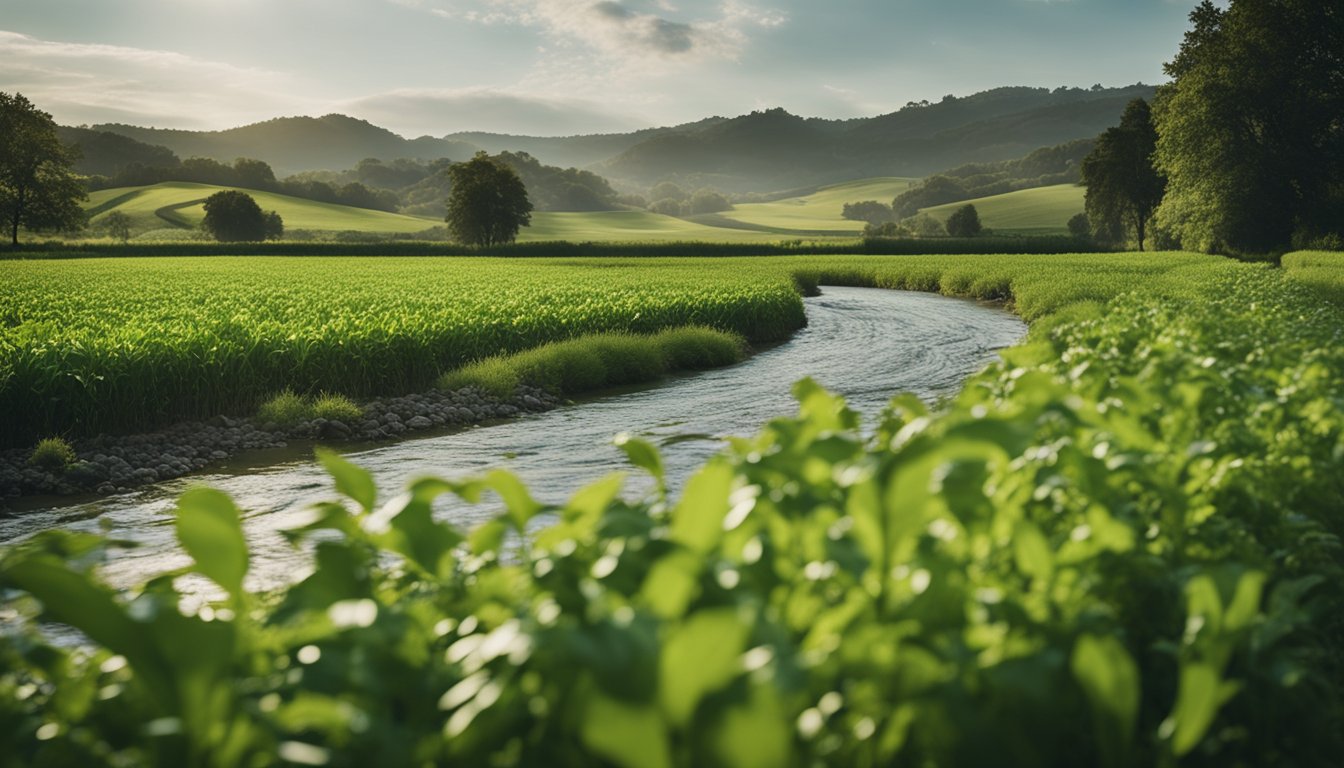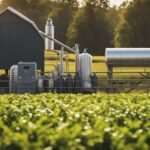4 Common Contaminants in Water due to Farm Run Off:
Agricultural Impact on Water Quality
Farm runoff is a major concern for water quality in many areas. When rain falls on farmland, it can wash various substances into nearby water bodies. This process affects both surface water and groundwater, which are important sources for drinking and other uses.
Water pollution from agriculture is a leading cause of contamination in rivers and streams across the country.
Half of U.S. waters are too polluted for fishing or swimming, with farm runoff often being the culprit. We will explore four common contaminants that come from farms and end up in our water supplies.
If only there were some sort of massive farm water filtration system to help clean the water used for our crops and livestock?
1) Nitrates
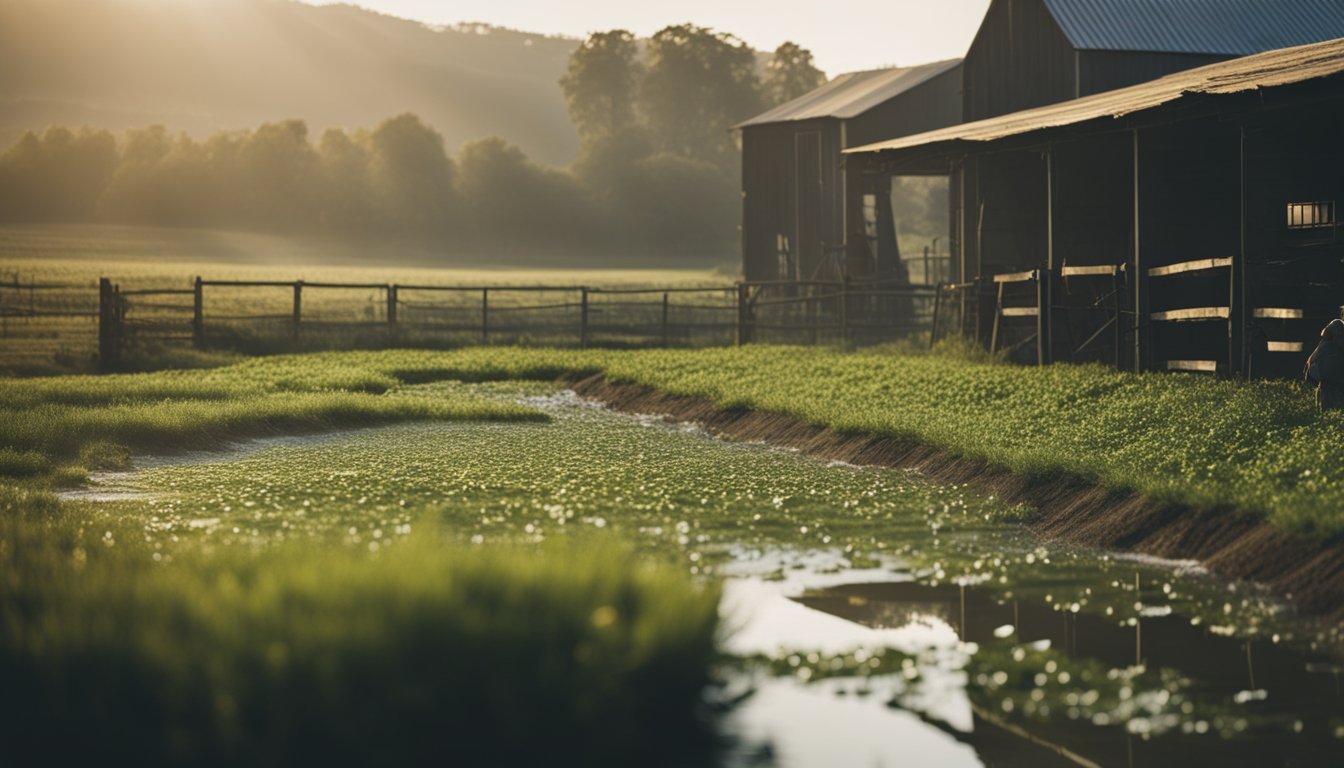
Nitrates are a common contaminant in water due to farm runoff. They come from fertilizers used on crops and animal waste from livestock operations.
When it rains, nitrates can wash into nearby streams, rivers, and groundwater. This pollutes drinking water supplies for many communities.
High nitrate levels in drinking water can be dangerous, especially for infants. It can cause a condition called blue baby syndrome, which reduces oxygen in the blood.
Nitrate contamination of drinking water is a widespread problem. Over 200 million Americans have some level of nitrates in their water.
2) Phosphates
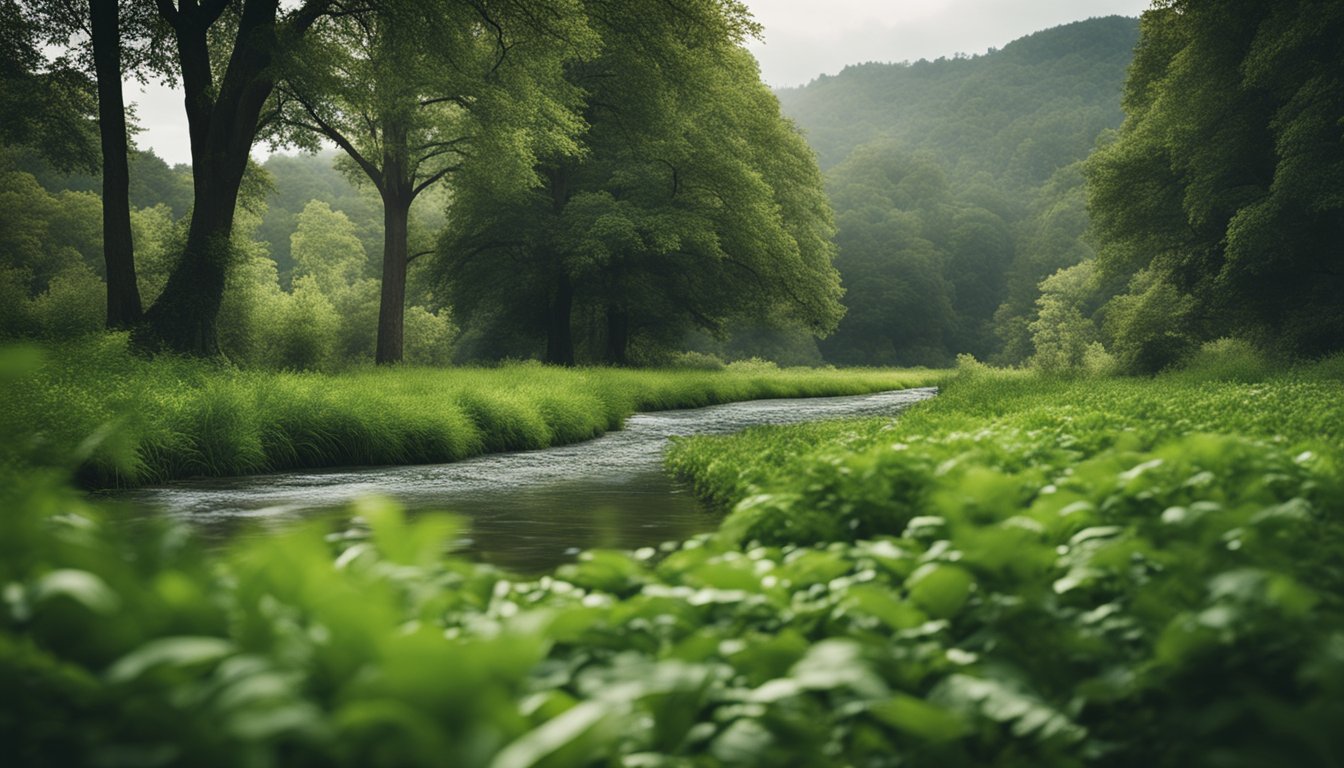
Phosphates are a big problem in farm runoff. They come from fertilizers farmers use to help crops grow. When it rains, these phosphates wash into nearby water.
Too many phosphates in water cause algae to grow fast. This can use up oxygen in the water. Fish and other water life may die as a result.
Phosphates can travel far in water. They affect lakes, rivers, and even oceans. We’ve seen phosphate levels in some waters rise over time.
Studies show farm runoff is a main source of phosphates in water. It’s hard to remove once it’s there. We need better ways to keep phosphates on farms and out of our water.
3) Atrazine
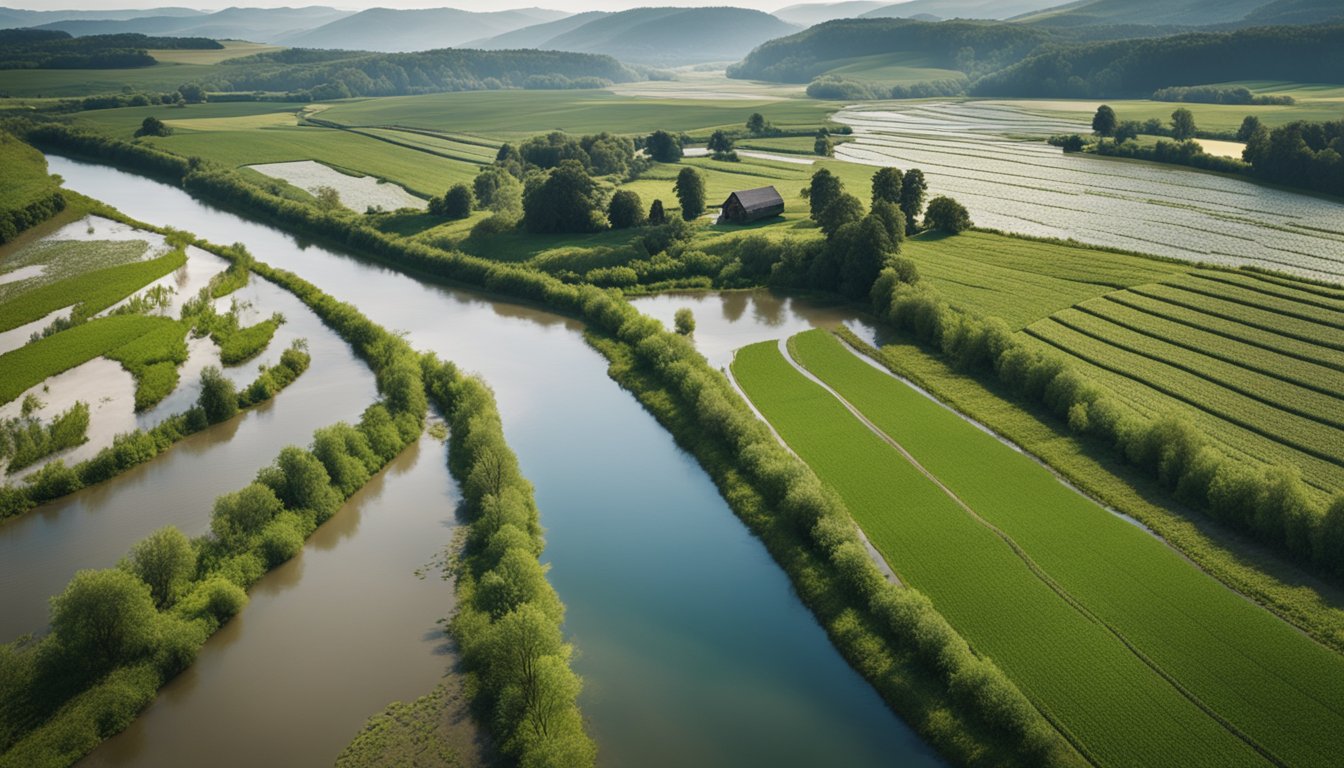
Atrazine is a widely used herbicide that often ends up in water supplies through farm runoff. It’s the second most common herbicide in the U.S., with over 70 million pounds sprayed in 2016.
This chemical can persist in water and soil for long periods. We’ve found it contaminates drinking water for millions of Americans, sometimes at potentially hazardous levels.
Atrazine is known to disrupt hormones and may harm developing fetuses. Its presence in water supplies is concerning due to these potential health effects.
4) E. coli bacteria
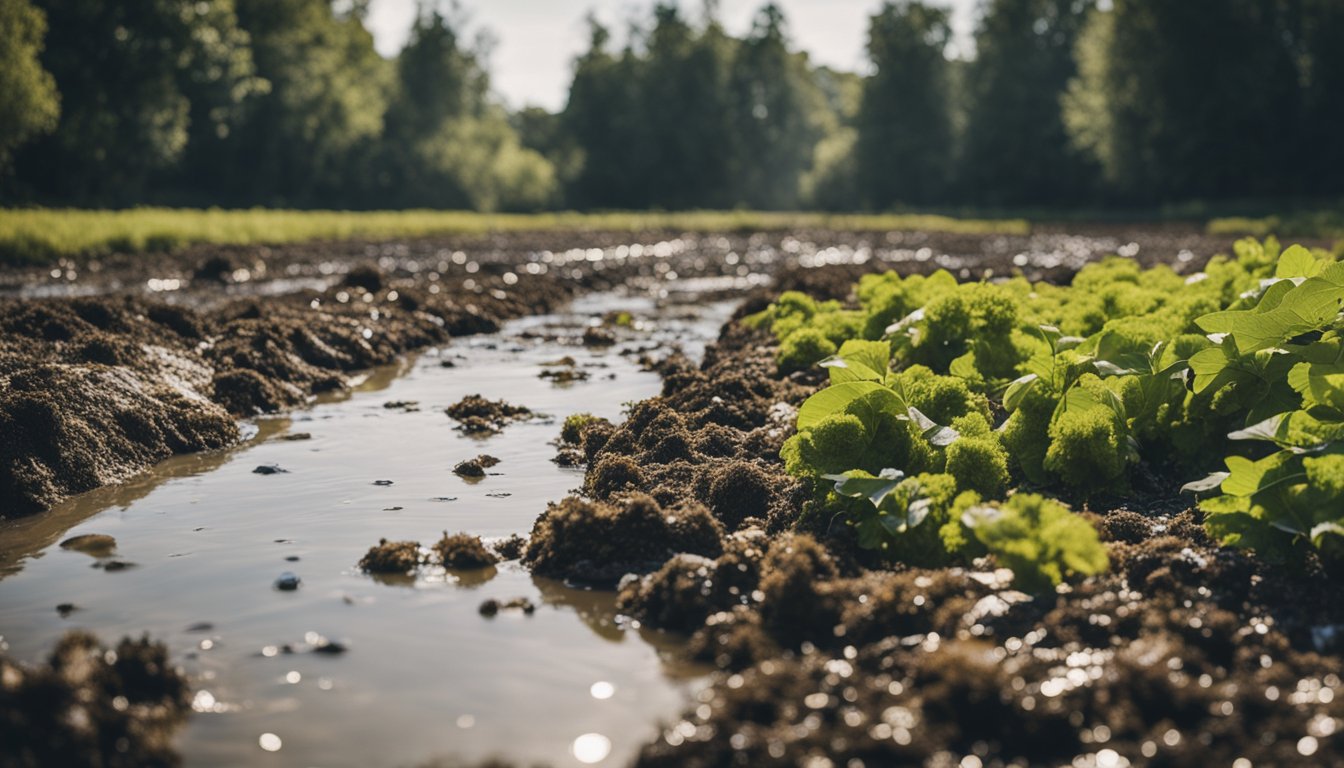
E. coli bacteria can enter water supplies through runoff contaminated with animal waste. These bacteria are often found in agricultural runoff, particularly from livestock farms.
While many E. coli strains are harmless, some can cause illness. The presence of E. coli in water indicates fecal contamination. This can lead to serious health risks if the water is used for drinking or recreation.
Impact of Farm Runoff on Water Quality
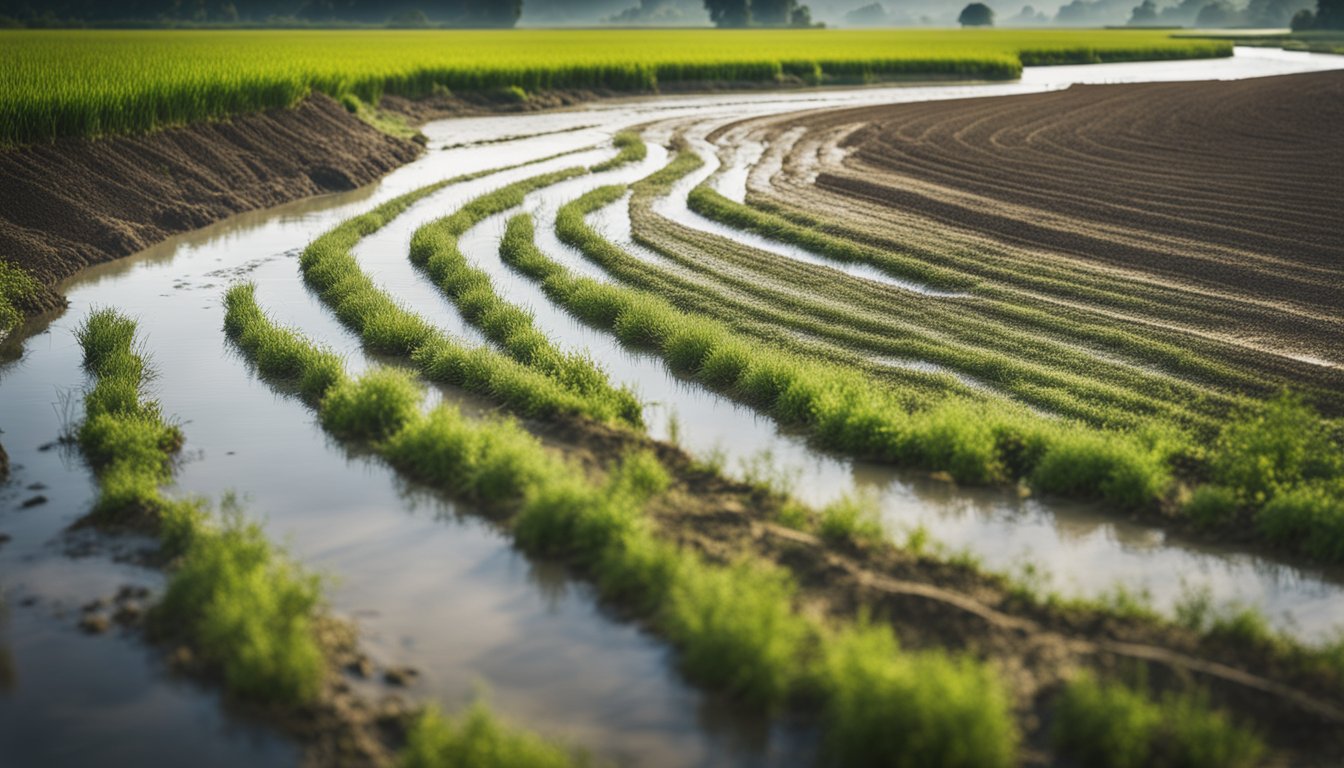
Farm runoff carries pollutants that harm water quality in rivers, lakes, and groundwater. These contaminants can make water unsafe for drinking and damage aquatic ecosystems.
Nutrient Pollution
Excess nutrients from fertilizers wash into waterways, causing big problems. Too much nitrogen and phosphorus lead to algae blooms. These blooms use up oxygen in the water, killing fish and other aquatic life.
Agricultural runoff is a top cause of water pollution in the U.S. Each year, farms apply about 12 million tons of nitrogen and 4 million tons of phosphorus fertilizer. Much of this ends up in our water.
Nutrient pollution also makes drinking water unsafe. High nitrate levels can cause serious health issues, especially for babies and pregnant women.
We can see the effects in many waterways:
- Cloudy, green water
- Bad smells
- Dead zones with no fish
- Toxic algae that’s dangerous to people and pets
Pesticide Contamination
Pesticides from farms often end up in our water. Rain washes these chemicals off crops and soil. They then flow into streams, rivers, and underground water sources.
About 500,000 tons of pesticides are used on U.S. crops each year. Many of these chemicals are found in surface and groundwater across the country.
Pesticides in water can harm:
- Fish and other aquatic life
- Birds and animals that drink the water
- People who use the water for drinking or recreation
Some pesticides break down quickly. Others can stay in the environment for years. Long-lasting pesticides build up in the food chain, causing more damage over time.
Chemical Understanding of Farm Runoff
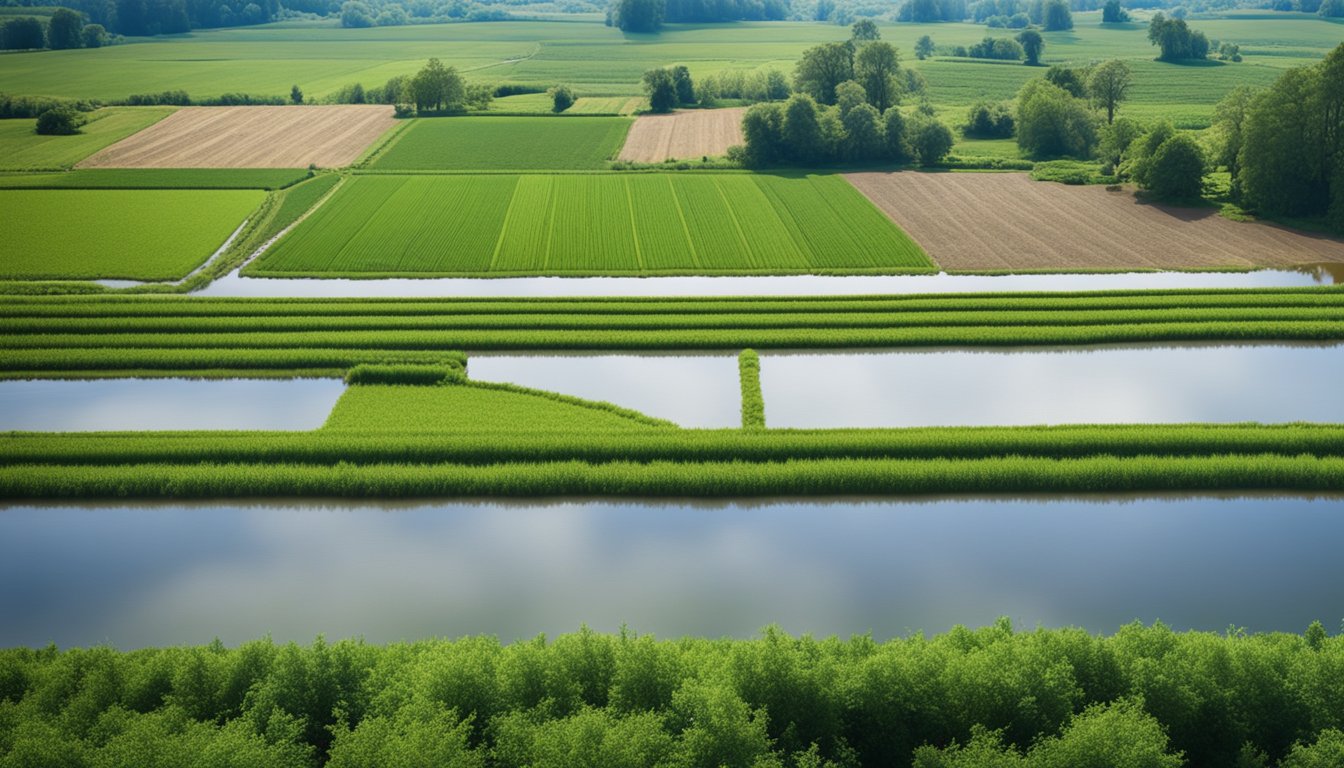
Farm runoff contains various chemical compounds that impact water quality. These substances come from agricultural practices and can have significant effects on aquatic ecosystems and human health.
The Role of Nitrogen and Phosphorus
Nitrogen and phosphorus are key nutrients in farm runoff. They come from fertilizers used to boost crop growth. When it rains, these chemicals wash into nearby water bodies.
Too much nitrogen and phosphorus in water leads to algal blooms. These blooms can harm fish and other aquatic life. They also make water unsafe for drinking and recreation.
Nitrogen in runoff often takes the form of nitrates. High nitrate levels in drinking water can be dangerous, especially for infants. Phosphorus tends to bind to soil particles. It enters water attached to eroded sediment.
We can measure these nutrients in parts per million (ppm). Safe drinking water should have less than 10 ppm of nitrates. For phosphorus, levels above 0.1 ppm can cause problems in freshwater.
Farmers can reduce nutrient runoff by using precision fertilizer application and creating buffer zones near waterways.
Steps to Mitigate Water Contamination from Farm Runoff
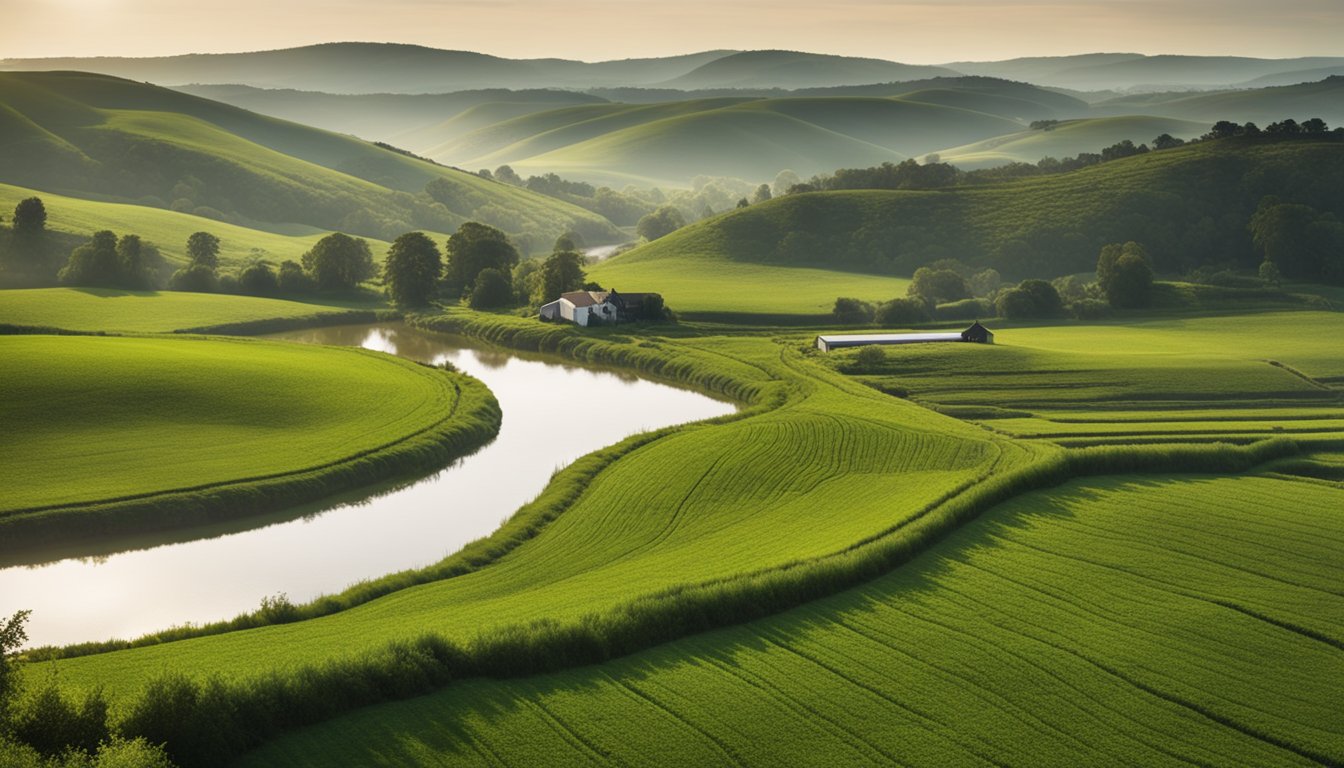
We can take several actions to reduce water contamination from farm runoff. These steps help protect our water resources and keep them clean.
One effective method is using cover crops. Cover crops prevent soil erosion and absorb excess nutrients. They also improve soil health over time.
Proper irrigation management is crucial. We should use efficient systems and schedule watering carefully. This reduces excess runoff and saves water.
Creating buffer zones near water bodies is another important step. These areas of grass or trees filter runoff before it reaches streams or lakes.
Conservation tillage practices can make a big difference. They leave crop residue on fields, which slows water flow and traps sediment.
We should also be mindful of fertilizer and pesticide use. Applying the right amount at the right time reduces excess chemicals in runoff.
- Use soil testing to determine nutrient needs
- Follow label instructions for pesticides
- Apply chemicals when rain isn’t expected
Building water retention basins can capture and filter runoff before it reaches water bodies. These basins allow sediment and pollutants to settle out.
Lastly, proper manure management is essential for livestock farms. We need to store and apply manure safely to prevent nutrient overload in nearby waters.
